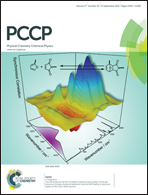Predictive modeling of synergistic effects in nanoscale ion track formation†
Abstract
Molecular dynamics techniques in combination with the inelastic thermal spike model are used to study the coupled effects of the inelastic energy loss due to 21 MeV Ni ion irradiation with pre-existing defects in SrTiO3. We determine the dependence on pre-existing defect concentration of nanoscale track formation occurring from the synergy between the inelastic energy loss and the pre-existing atomic defects. We show that the size of nanoscale ion tracks can be controlled by the concentration of pre-existing disorder. This work identifies a major gap in fundamental understanding on the role of defects in electronic energy dissipation and electron–lattice coupling.


 Please wait while we load your content...
Please wait while we load your content...